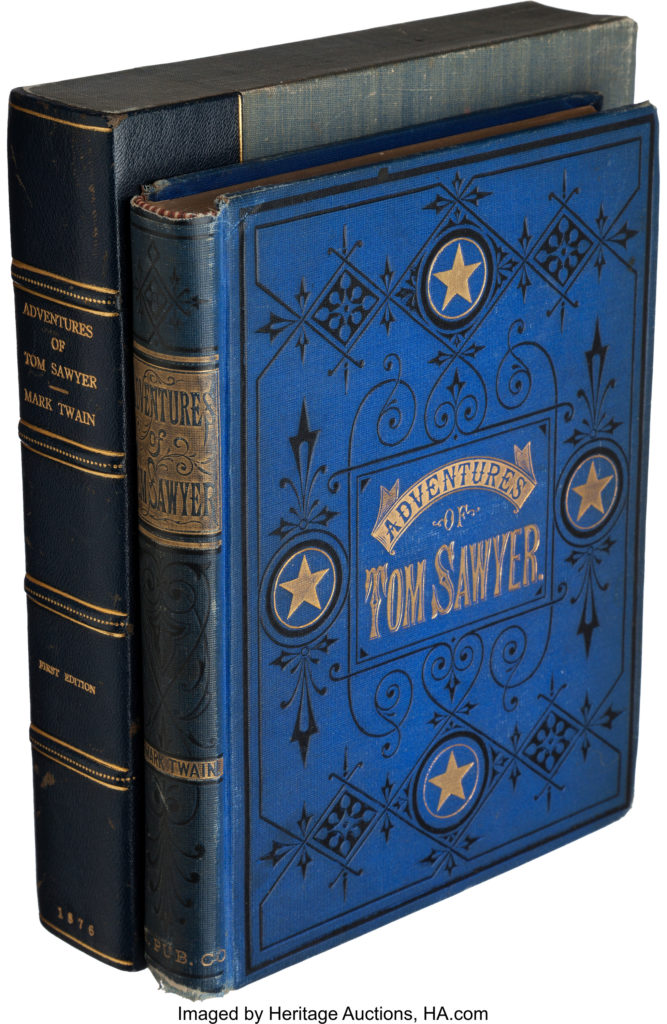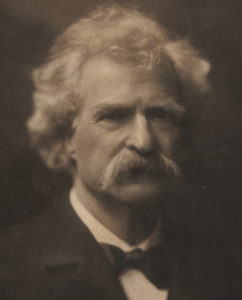
By Jim O’Neal
American writer and satirist Mark Twain was born on Nov. 30, 1835 – exactly two weeks after Halley’s Comet made its appearance. In his 1909 biography, he wrote, “I came in with Halley’s Comet in 1835. It is coming again next year and I expect to go out with it. It will be the greatest disappointment of my life if I don’t go out with Halley’s Comet. The Almighty has said, no doubt, ‘Now here are these two unaccountable freaks, they came in together, they must go out together.’” Twain died shortly after the comet returned.
Twain – real name Samuel Langhorne Clemens – co-wrote a novel with his friend Charles Dudley Warner titled The Gilded Age: A Tale of Today. It was the only time Twain wrote with a collaborator and it was supposedly the result of a dare from their wives. Whatever the truth, the novel lent its name to the post-Civil War period, which has become widely known as the Gilded Age. The novel skewered that era of American history because of the widespread corruption and materialistic greed of a few at the expense of the downtrodden masses.

From a purely economic standpoint, the period of 1870-90 was when the United States became the dominant economy in the world. For the majority of recorded history, China and India were the global powerhouses, with 70 percent of world GDP. Economic output, up until about 200 years ago, was largely driven by large populations of people. But with the industrial revolution, followed by the information revolution, the significance of mere huge populations declined. While Europe was going through its resurgence following the Dark Ages, the Asian superpowers were divided into small kingdoms fighting each other.
Factors contributing to the post-Civil War growth were primarily in the North as industrial expansion surged while the slave-labor system was abolished and cotton prices collapsed. New discoveries of coal in the Appalachian Mountains, oil in Pennsylvania, and iron ore around Lake Superior fueled the growth of the United States infrastructure. Railroad systems more than tripled from 1860 to 1880 – concurrent with the Transcontinental Railroad (1869) that linked remote areas with the large industrial hubs; along with commercial farming, ranching and mining. London and Paris poured money into U.S. railroads and American steel production surpassed the combination of Britain, Germany and France. Technology flourished with 500,000 patents issued for new inventions and Thomas Edison and Nikola Tesla electrified the industrial world.
Capital investment increased by 500 percent and capital formation doubled. By 1890, the United States surpassed Britain for manufacturing output and by the beginning of the 20th century, per-capita income was double that of Germany or France and 50 percent higher than Great Britain.
Then, inexplicably, Europeans started a world war and 20 years later, both the European and Asian nations started another global conflict. The United States strategically entered both wars late, preserving our capital, military and human resources. Excluding a few ships here and there (e.g. Pearl Harbor), we kept 100 percent of our domestic infrastructure intact. Excluding 9/11, we have probably damaged more of our own cities in domestic protests and rioting than all foreign enemies combined in acts of war.
As Pogo wisely observed, “We have met the enemy and he is us.”
 Intelligent Collector blogger JIM O’NEAL is an avid collector and history buff. He is president and CEO of Frito-Lay International [retired] and earlier served as chair and CEO of PepsiCo Restaurants International [KFC Pizza Hut and Taco Bell].
Intelligent Collector blogger JIM O’NEAL is an avid collector and history buff. He is president and CEO of Frito-Lay International [retired] and earlier served as chair and CEO of PepsiCo Restaurants International [KFC Pizza Hut and Taco Bell].
